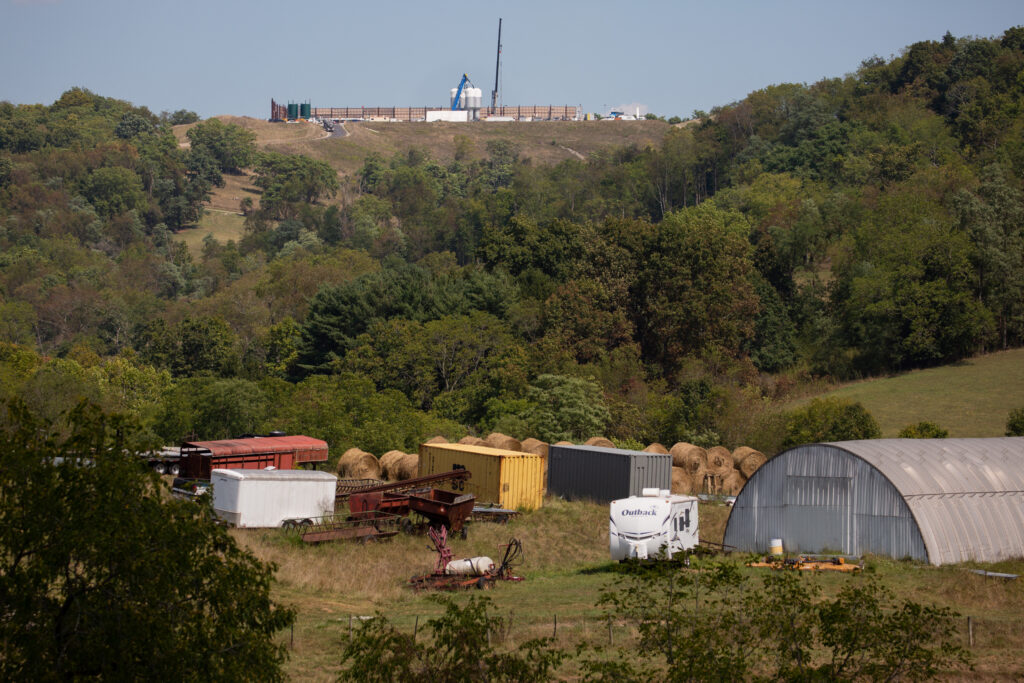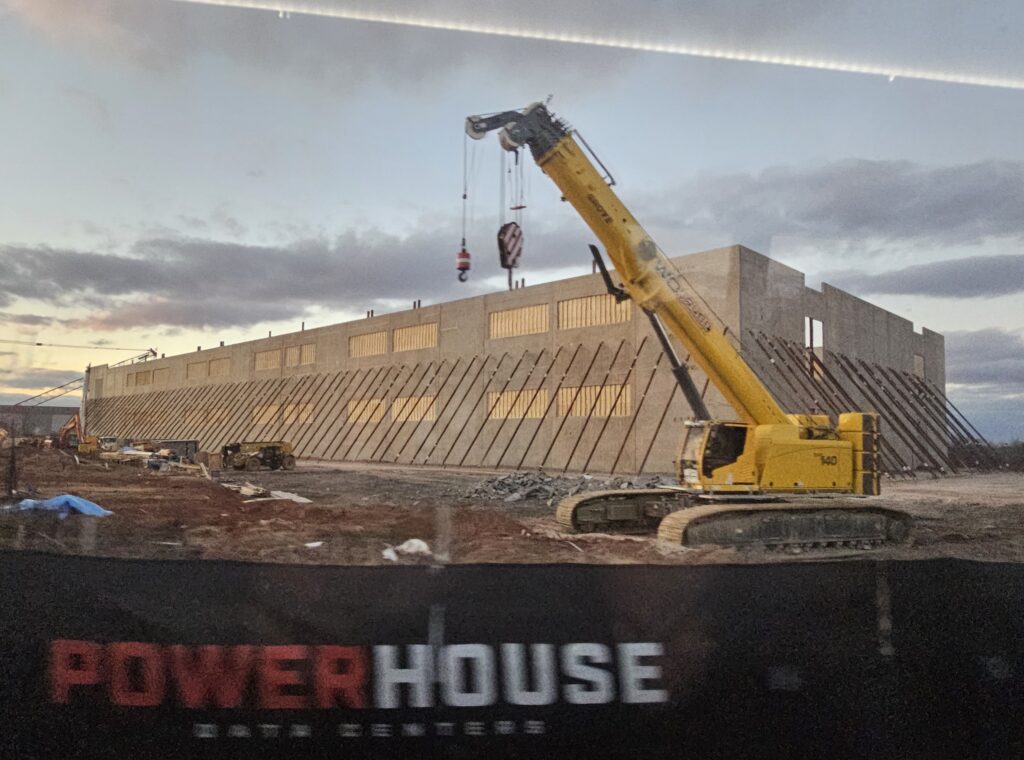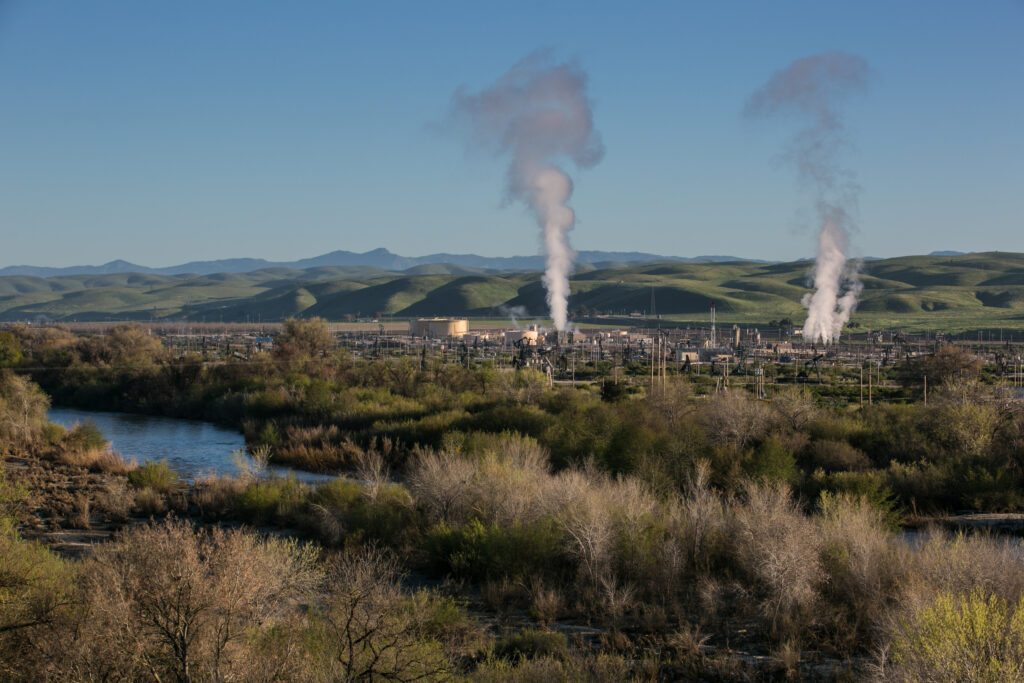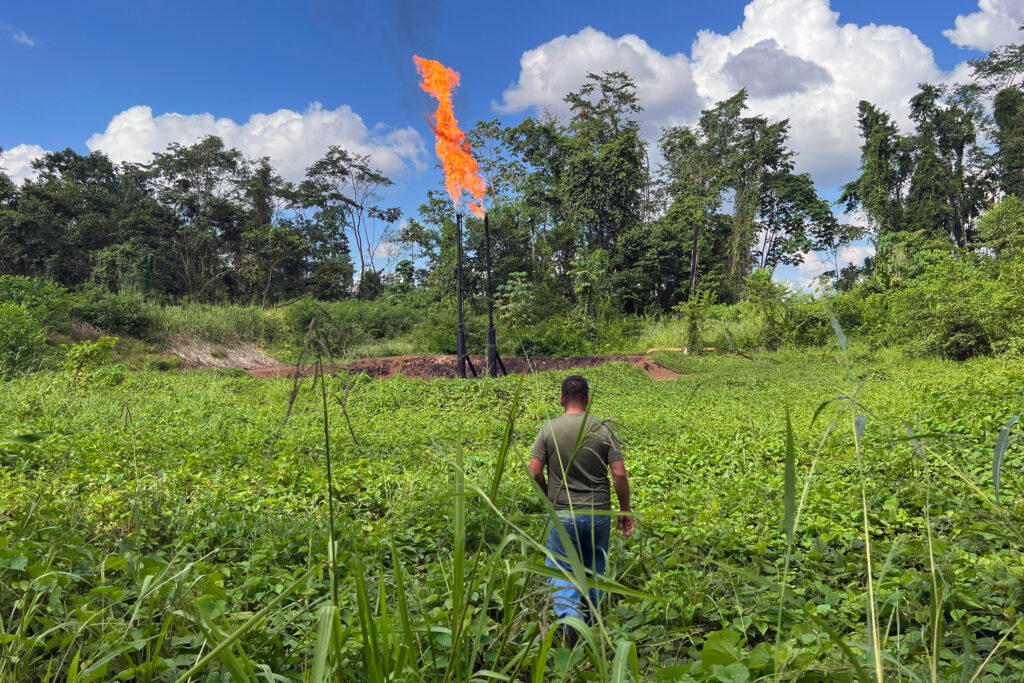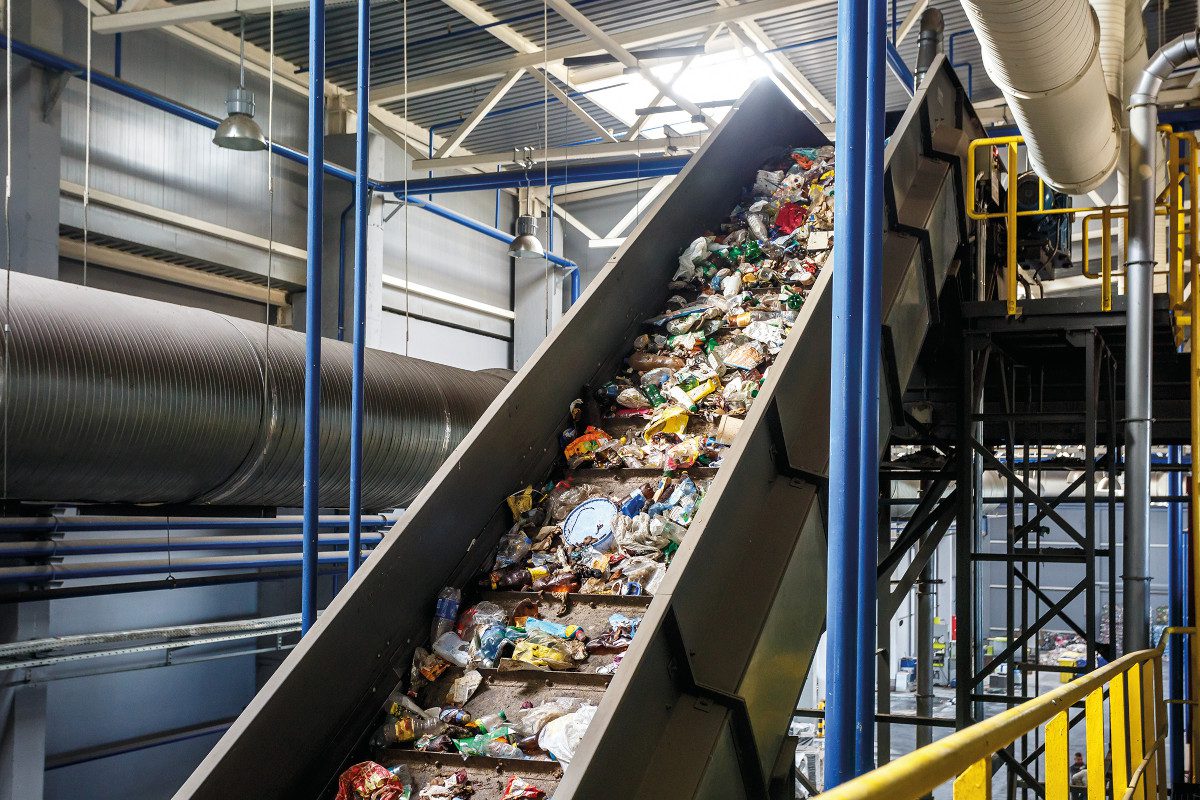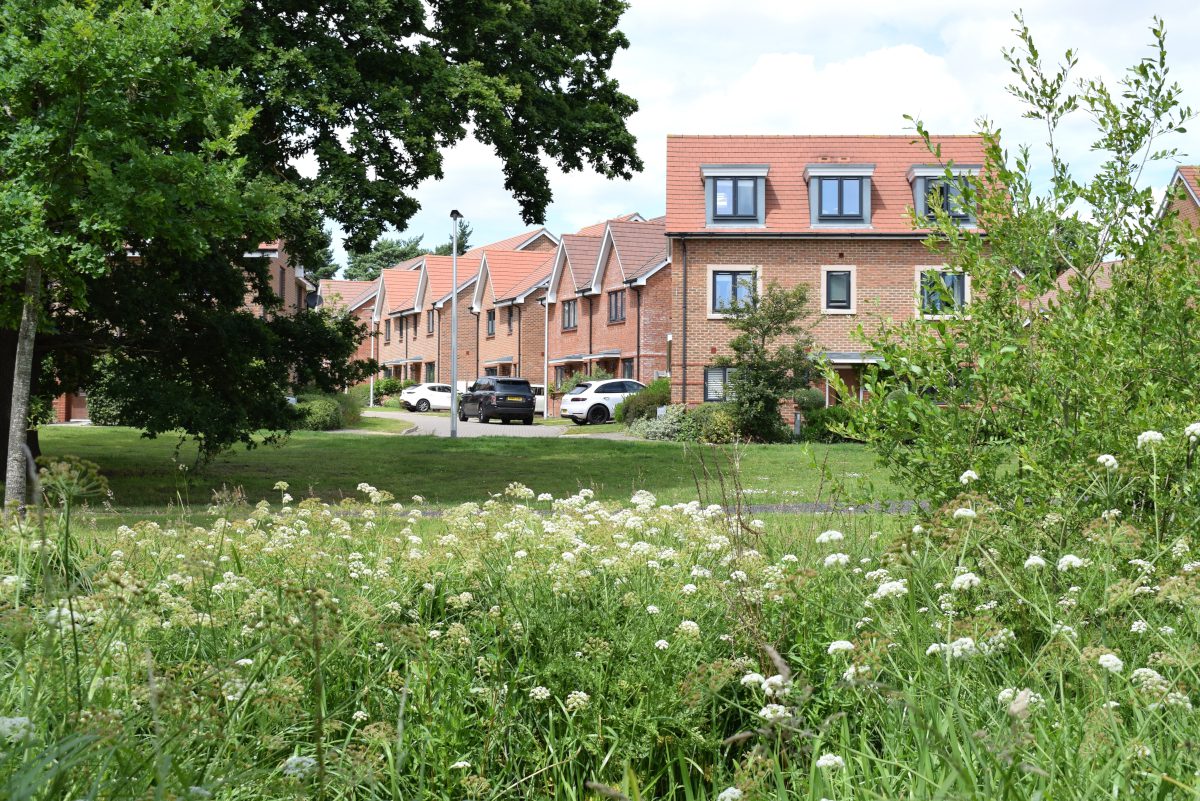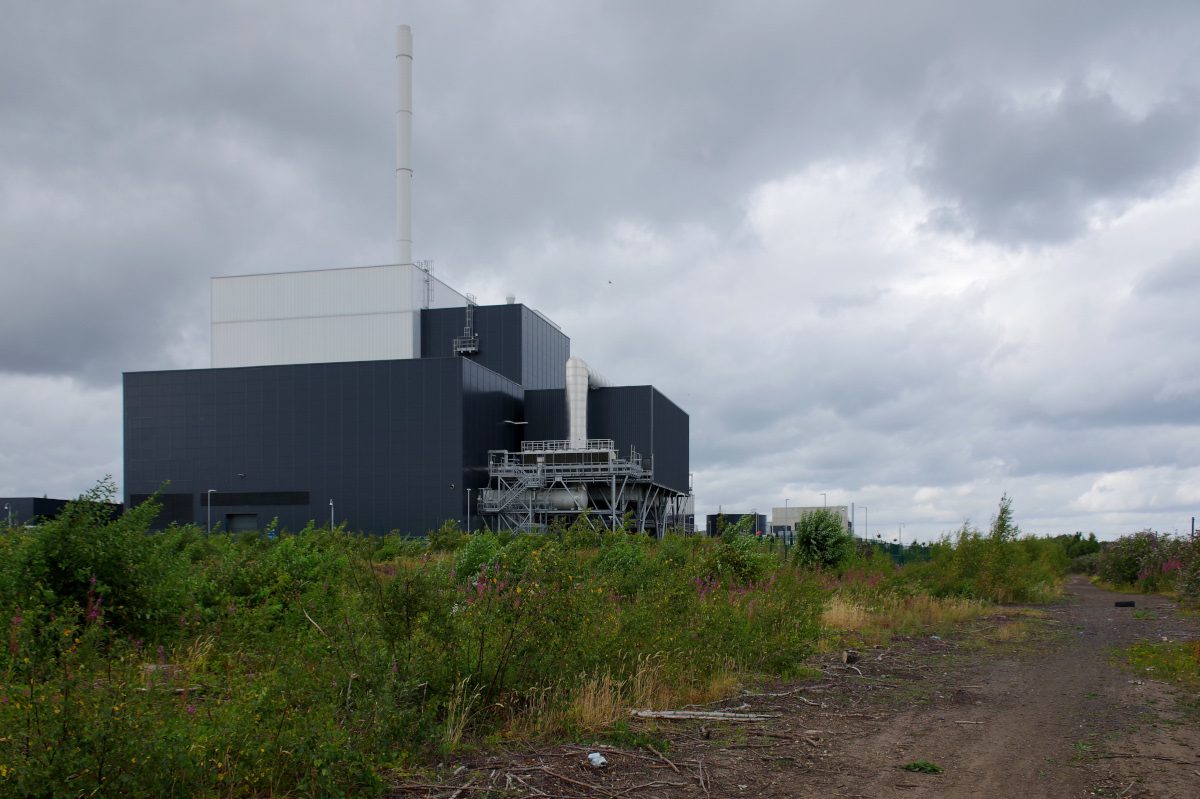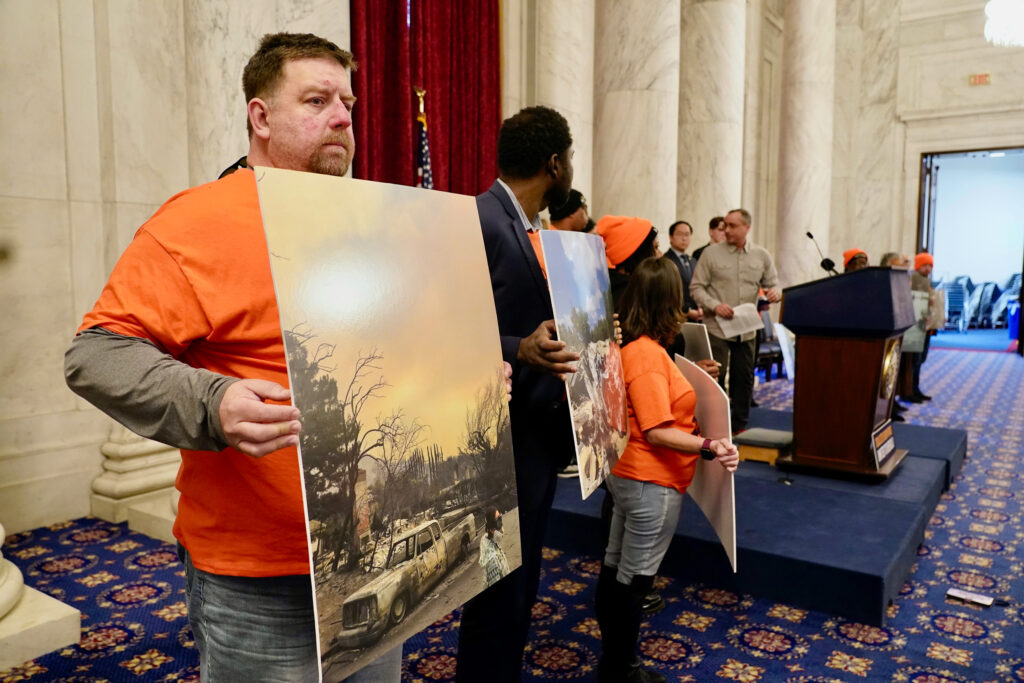CONECUH NATIONAL FOREST, Ala.—Jimmy Stiles knows Conecuh National Forest. He lives in it.
Stiles, a field biologist, has lived in his home in the northern section of the forest, which lines the Alabama-Florida border, for nearly 25 years. He said he’s loved every second of it.
That’s why, Stiles said, he’s willing to fight for the forest.
We’re hiring!
Please take a look at the new openings in our newsroom.
See jobs
Stiles is one of many forest residents, environmentalists and other members of the public opposed to potential oil and gas development within the confines of Conecuh. In late January, Stiles and others expressed their views in person as part of a discussion with federal officials responsible for deciding whether to continue allowing oil and gas development proposals on 81,400 acres within the forest.
The proposal would also allow for an analysis on opening an additional 2,900 acres of private land for such development in areas where the federal government owns the underlying mineral rights.
Dozens of stakeholders also commented on the forest service’s proposal in writing during a 30-day public comment period that ended in mid-February. Of the 110 comments, 109 expressed opposition to allowing oil and gas development within the forest.
The forest service’s decision on whether to allow oil and gas development within the park will be a test of the Trump administration’s commitment to the continued extraction of fossil fuels that drive the climate crisis.
“As you’ve heard me say many times,” Trump said in his first joint address to Congress during his second term, “we have more liquid gold under our feet than any nation on Earth and by far. And now I’ve fully authorized the most talented team ever assembled to go and get it. It’s called drill, baby, drill.”

For Stiles, any expansion of oil infrastructure within the park would be devastating, putting at unnecessary risk one of the most biologically diverse areas of the country—an area that’s home to protected species like the gopher tortoise, the red-cockaded woodpecker, and the eastern indigo snake, among others.
“They just need to leave it all alone,” Stiles said. “What’s proposed could have serious ecological impacts. I’ve seen the wells that have been put in before and the lack of restoration after they’re finished with production. They leave a serious impact on the ecology of the area.”
The U.S. Forest Service, which is responsible for stewardship of national forests, announced it would begin the so-called “scoping” process around potential oil and gas leasing inside Conecuh National Forest in January, with an environmental impact assessment estimated to be completed by summer 2025.
As part of the scoping process, the service held an informal question and answer session for members of the public to ask federal staffers about the oil and gas development proposal.
Stiles, the field biologist, was one of the attendees, asking representatives of USFS and the Bureau of Land Management, which conducts oil and gas lease sales, about the potential impacts of the project. Stiles said he’s glad federal officials held the session but that what he heard from them didn’t allay his worries about the impacts of oil and gas development in the forest.
“Oil and gas extraction efforts have a poor environmental record and to have that on our public land is short sighted to say the least,” he said. “There’s plenty of opportunity to drill on private land.”
During the question and answer session, officials from the USFS and BLM explained that changes in the situation on the ground justified reanalyzing permissions for new oil and gas drilling within the park, but staffers appeared split on what exactly those relevant changes actually are.
Some suggested the changes from the legal protection status of species within the forest and even the social cost of carbon were factors involved in triggering the new analysis. Others said innovations in oil and gas extraction technology were relevant to consider. One staffer suggested that the proposal was simply a routine update, given that the last changes to the forest plan at issue were made more than two decades ago.
Brian Kennedy, assistant district manager for minerals at BLM, also said during the event that the agency had received expressions of interest from oil and gas developers for around 10,000 acres within the park. That interest in development, members of the public present for Kennedy’s comment said, may be one motivation for the proposal.
But anyone interested in oil and gas development, attendees suggested, is probably not interested in an analysis of the proposal’s impacts on climate change or of the changing statuses of legal protection for endangered or threatened species.
The updated proposal analysis may also be a way for federal officials to shore up the government’s legal position, updating the environmental assessment necessary for defending against litigation over new oil and gas leases there. The new analysis would assess “how changed conditions and circumstances could result in a need to update leasing availability decisions described in the 2004 Forest Plan,” the announcement of the proposal by USFS said.
The USFS’ previous environmental assessment did not include any analysis of the impact of expanded oil and gas development on efforts to mitigate climate change, something environmentalists argue should undoubtedly be part of the government’s decision-making calculus.
January’s announcement of the proposed plan did not mention climate change or greenhouse gas emissions but did say that updating the forest plan and other scoping documents would further government policy to “foster and encourage private enterprise in the development of economically sound and stable industries.”
Staffers at the January question and answer session, held after Trump’s inauguration, suggested that climate change would be considered as part of the environmental assessment required ahead of any decision by federal officials on the proposal.
Jacob Deal, an air quality specialist for USFS, said that agency staffers would consider both direct and indirect emissions, including transportation emissions associated with bringing oil and gas products to market, when analyzing the environmental impact of the proposed oil and gas leasing within the forest.
Governmental guidance around the social cost of carbon would be incorporated into the analysis as well, he and other staffers said. Asked whether the Trump Administration’s directives around energy production and his climate denial would change that analysis, USFS officials said that so far, they were not aware of any policy directives that would force them to ignore climate change or the social cost of carbon in its assessments.
A day one executive order by President Donald Trump, however, disbanded the Interagency Working Group on the Social Cost of Greenhouse Gases (IWG), which was established pursuant to Executive Order 13990. “…Any guidance, instruction, recommendation, or document issued by the IWG is withdrawn as no longer representative of governmental policy,” the order said in part.
That guidance with the IWG includes work on the social cost of carbon, a concept the White House has said without evidence “is marked by logical deficiencies, a poor basis in empirical science, politicization, and the absence of a foundation in legislation. Its abuse arbitrarily slows regulatory decisions and, by rendering the United States economy internationally uncompetitive, encourages a greater human impact on the environment by affording less efficient foreign energy producers a greater share of the global energy and natural resource market.”
Policy changes like that worry stakeholders like Stiles, who said he believes that the impacts of climate change should undoubtedly be included in any analysis of the Conecuh National Forest proposal.
Following the in-person session, the forest service solicited written feedback from members of the public during a 30-day comment period that ended in February. An Inside Climate News analysis of the resulting feedback showed that of 110 comments, only a single individual expressed support for oil and gas leasing inside the national park. All other 109 comments opposed fossil fuel development inside the confines of Conecuh.


Among those who commented were environmental organizations, park residents and visitors, biologists and other scientists and concerned members of the public. Commenters expressed concerns about the environmental, economic and moral implications of the proposal. Most commenters said they were opposed to any oil and gas drilling within Conecuh National Forest.
In her letter to USFS officials, Linda Kline explained that she and her husband, who live in northern Michigan, regularly visit the park, which has become a place of solace for her following a diagnosis of multiple sclerosis.
“We hike the trails here, spend day after day having picnics way out in the woods, or along Blue Lake or Open Pond,” she wrote in part. “…The National Forest pulls you in…The desire to soak it all in, to reach further and further into the woods, or to spend an entire afternoon doing absolutely nothing but watch the birds, and all the animals, the wind blowing through the enormous pines, has done more to help my physical and mental health than I can describe. Please, keep the Conecuh National Forest free of more oil and gas development. Not just for me, but for all of our children, and their children.”
Currently, only one active well is located within the park, operated by Venture Oil and Gas, a company with a mixed record of environmental safety. In 2020, for example, documents show that the company settled an enforcement action with the Environmental Protection Agency, which found that the company had violated various aspects of the oil prevention regulations outlined in the Clean Water Act at one of its Atmore, Alabama facilities.
Even if the oil and gas development proposal is approved, it is unclear whether the forest would experience a boom in fossil fuel extraction. Oil and gases leases in Alabama are rarely commercially productive, records show. BLM officials said that if the proposal were approved, they estimate that between one and 11 new wells would be constructed as a result.
The only supporter of the proposal to submit a comment to USFS, Rich Anderson, emphasized limited development potential, calling any possible environmental impacts “minor.”
“I do not see how responsible access to the oil and gas resources would significantly be a negative impact on the ecosystem,” he wrote. “Nature has a way of healing and restoring itself from minor changes that drilling brings to a plot of land. I endorse drilling in Conecuh National Forest.”


The prospect of such limited development is another reason to simply leave the oil in the ground, many other commenters noted. Why risk environmental contamination of a national forest for limited economic benefit, they asked.
“The forest as it stands is more valuable than any amount of oil or gas you may get from it,” commenter Dan Morriss wrote. “We desperately need to preserve the dwindling few acres of forest land we have left.”
April Lipscomb, a senior attorney for the Southern Environmental Law Center, submitted comments on the proposal on behalf of SELC, the Alabama Environmental Council, Cahaba Riverkeeper, the Center for Biological Diversity, the Choctawatchee Tiverkeeper, Wild Alabama, and Sierra Club’s Alabama Chapter. In the comment letter, Lipscomb wrote that the alternatives proposed by USFS—either having nearly the entire forest open for oil and gas leasing or prohibiting such development all together—is an unnecessary, all or nothing approach.
“We are baffled by the Forest Service’s all-or-nothing approach to its leasing availability analysis,” Lipscomb wrote. “Alternatives A and B effectively leave the entire Forest open to oil and gas development. Alternative C, in contrast, prohibits new oil and gas leases across the entire Forest. Needless to say, there are a multitude of reasonable alternatives between these two extremes. We urge the Forest Service to consider other middle-ground alternatives that balance the need for resource extraction with the preservation of biological and recreational resources.”
In the end, Lipscomb wrote, environmental groups are opposed to all oil and gas leasing across Conecuh National Forest.
“The Conecuh is a biodiverse gem that is home to countless rare and endemic species, lush lowland forests, and pristine watersheds,” she wrote. “The Conecuh has far more value as a nature preserve and recreational haven than as a fragmented hub for fossil-fuel extraction and hydraulic-fracturing waste disposal. Conservation Groups—and, we suspect, the vast majority of Alabamians who use the Forest—therefore enthusiastically support an ‘Alternative C.’”
Other commenters emphasized the importance of the forest in the much-needed restoration of the longleaf pine. The state tree of Alabama, it once reigned throughout the southeastern United States, but was all but given up for dead not long ago. Beginning with European settlement, and accelerating after the Civil War, logging and resin extraction drove the sturdy, long-needled species to near-extinction. Less than 3 percent of its original 92 million-acre range remained by the 1990s.
“Please do not grant any oil and gas leases on the longleaf pine forests of the Conecuh National Forests,” wrote Katy Sparrow, who teaches environmental science at Georgia State University. “These forests are invaluable habitat and are also sinks of carbon (regulating climate change), while oil and gas production, already at historic highs, contribute to accelerating climate change.”
“I am from South Alabama and have loved each and every visit to the Conecuh National Forest,” wrote Laura Binford, another commenter. “Any habitat loss to the area would be a travesty, and prioritizing drilling over the habitat of Longleaf Pines and Red Cockaded Woodpeckers is a disgrace. Alabama has a lot to be proud of, and its massive amount of biodiversity is probably the most impressive aspect of the state.”
Once an environmental assessment of the proposal is completed and released, members of the public will have an additional opportunity to comment or object. The agency estimated that a decision on the proposal will be made by December and that implementation of that decision will begin in February 2026.
Marianne Lavelle contributed reporting for this story.
About This Story
Perhaps you noticed: This story, like all the news we publish, is free to read. That’s because Inside Climate News is a 501c3 nonprofit organization. We do not charge a subscription fee, lock our news behind a paywall, or clutter our website with ads. We make our news on climate and the environment freely available to you and anyone who wants it.
That’s not all. We also share our news for free with scores of other media organizations around the country. Many of them can’t afford to do environmental journalism of their own. We’ve built bureaus from coast to coast to report local stories, collaborate with local newsrooms and co-publish articles so that this vital work is shared as widely as possible.
Two of us launched ICN in 2007. Six years later we earned a Pulitzer Prize for National Reporting, and now we run the oldest and largest dedicated climate newsroom in the nation. We tell the story in all its complexity. We hold polluters accountable. We expose environmental injustice. We debunk misinformation. We scrutinize solutions and inspire action.
Donations from readers like you fund every aspect of what we do. If you don’t already, will you support our ongoing work, our reporting on the biggest crisis facing our planet, and help us reach even more readers in more places?
Please take a moment to make a tax-deductible donation. Every one of them makes a difference.
Thank you,




